TSAR ALEXANDER II: Tsar Liberator and Rise of Terrorism in Russia.
By Cheryl Adams Rychkov
(edited by Helen Azar)
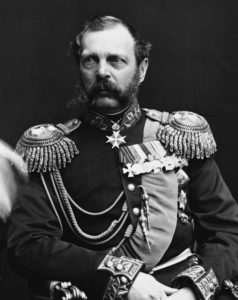
Alexander Nikolaevich Romanov, eldest son of Russia’s Tsar Nicholas I, was born, grew up, and came of age in the maelstrom of autocracy and repression; and a swelling tide of radicalism, nationalism, and nihilism, all of which defined much of nineteenth-century Russian politics and culture.
The maelstrom itself was formed in the wake of a century of revolution, intrigue, and assassination coming from within the House of Romanov and without. Indeed, young Alexander’s own grandfather, Paul I, was murdered in a coup led by his wife, who then took the throne for herself as Catherine II . His sons and successors, Alexander I and Nicholas I, never lost sight of the potential ease with which even autocratic power – and lives – could be overtaken and destroyed. To that end, and despite the tutelage received from their domineering grandmother and her ideas of reform , both Tsars spent their reign dithering between pursuing social and political reforms demanded by an ever-increasing dissatisfied – and often desperate – population, and protecting the status quo of autocracy, which was perceived by those who ruled as the most reliable way to maintain order, and their personal safety. When Nicholas I died in 1855, he left his thirty-seven-year-old son and heir a nation – the largest and perhaps most diverse on the planet – engaged in costly wars, both from within, and without.
The young man who would become Alexander II was formed, and informed, by all of these. His twenty-six year reign would be marked by earnest efforts at major reforms, partly as a sort of filial revenge against a father he viewed as cruelly autocratic, and the by now typical tsarist retreat to the safety of that same autocracy. For the most part, the latter was due to the state of mind Alexander II endured, particularly during the final ten years of his reign. For it was around that time that – despite the reforms, despite his proudly worn sobriquet of “Tsar Liberator,” a tsar who, perhaps naively; yet, earnestly, sought to help his people, he became a target, a man hunted by domestic terrorists. A mere two months before the terrorists at long last ended his life in violence, he was in talks with his government, in preparation for offering the Russian people a constitution.
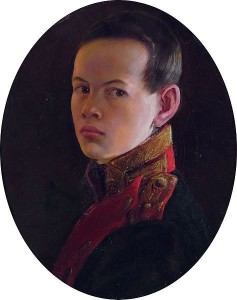
Nearly one hundred and fifty years later, historians continue to debate the reasons why the Tsar Liberator was hunted and finally cut down. The broken economy, in the wake of the disastrous Crimean War, the rise of an educated, angry intelligentsia class (made possible by the reforms of his ancestors, Catherine II and Peter II) who raised a generation of nihilist children, who then in their turn gave birth to the first true Russian revolutionaries, they of Alexander and his successor’s generation, the disappointing and damaging results that came from an emancipation of millions of serfs, upon all these and others the blame usually falls. However, with a bit more probing, it is possible to observe a phenomenon and experience shared by both the young revolutionaries/terrorists, and Alexander II himself. The closest, most poignant roots of the Tsar’s assassination lie in Romanticism.
ROMANTICISM AND RUSSIA
The Romantic Era, or, Romanticism, first took hold in Great Britain during the mid-to-late eighteenth century. Informed by authors including Jane Austen, Laurence Sterne, and William Blake; the practice of enclosure, the Industrial Revolution, and both the American and French Revolutions, two English poets, William Wordsworth and Samuel Taylor Coleridge published what would become the manifesto of Romanticism. The movement was in retaliation against the Age of Reason and the European Enlightenment, an era that Wordsworth, Coleridge, their followers and successors regarded as damaging to nature and the common man. Romanticism embraced and wished to restore the natural world and the common man to a perceived, earlier golden age. In theory, at least, the American and French Revolutions promoted the same ideals. The tenets of Romanticism spread across Europe and over the Atlantic to the Americas. It may be argued that Romanticism was that rare event known as a paradigm shift. Its influence resulted in the ways society understood human rights, personal relationships, including marriage, the environment, and the arts. Indeed, it continues to inform cultural, political, and social mores into the twenty-first century.
All of this was fine for Westerners; but Russia, as was the norm, lagged behind other European countries in myriad ways. In 1798, as Wordsworth and Coleridge penned and published Lyrical Ballads, their manifesto and accompanying collection of Romantic poems, Russia was ruled by an aging Catherine II (the Great), a woman who arranged for her Tsar husband’s murder, and taking the throne for herself, had spent most of her reign encouraging social and political reform. She unknowingly planted the seeds for rebellion by encouraging education for the noble and middling classes. Simultaneously, she did little to encourage the implementation of technology brought by the then-nascent Industrial Revolution. Russia at the time of Alexander II’s coronation in September 1855, was still largely a feudal society, a system for centuries abandoned by Western Europeans. While there was a large (though, inevitably and hopelessly corrupt) class of civil workers, a small but significant intelligentsia and the beginnings of a middle class, most Russians were rural peasants, overwhelmingly most of them trapped for generations as serfs. Essentially, the majority of the Russian people were enslaved by rich, noble landowners. Of industry and technology, there was nearly none. The railroad system would expand and become more important during Alexander II’s reign, but it would not be until the reign of his grandson, Nicholas II, that rail lines would run from Moscow to Vladivostok.
While education during the period was available to only the nobility, the gentry, and to a lesser extent, civil servants, the reigns of Nicholas I and Alexander II did allow for something that is typically used to describe certain periods during the Soviet Regime: a thaw in censorship and a blossoming of the arts. While Alexander Pushkin is considered by some to have led the way, he cannot be categorized as a Romantic. Romanticism had to come in from abroad, from Great Britain, in the form of Tristram Shandy, works by Byron, Shelley, Keats, and Blake; British and American landscape artists, Mary Wollstonecraft, and the ideals of the French and American Revolution. It was a heady time for Western culture. Society was changing and questioning and expressing the longings of the soul. Russia’s new leadership was curious. And thus, it was the thaw of the 1830s-1860s that allowed the movement to enter and influence Russian culture. So powerful was the sway of Romanticism, that Nicholas I, his wife, family, and advisors agreed – even insisted – that none other than Vasily Zhukovsky serve as tutor to Tsarevich Alexander. Zhukovsky is the father of Russian Romanticism.
A ROMANTIC TSAREVICH
Alexander was a tender eight years old when he first came under the tutelage of Vasily Andreevich Zhukovsky. The two quickly recognized in the other a kindred, sensitive soul. Alexander – called Sasha – was more like his mother, the Tsaritsa Maria, sentimental, emotional, and kind-hearted. Those qualities disturbed his stern, imperial father, yet there seemed to have been no question as to who should serve as the Tsarevich’s first official teacher, and the heir and his tutor became lifelong confidants.
Zhukovsky was born into a family of literary background. Though even the circumstances of his birth were of a Romantic nature (he was the illegitimate son of a Russian army officer and a beautiful Turkish prisoner of war) , as a teenager he was sent to Moscow University, where the cutting-edge of literary studies had to do with becoming learned in the tradition of the British and German Romantics; or, as they were called then, Sentimentalists. In 1802, a good twenty years before Alexander Pushkin was born, nineteen-year-old Zhukovsky had published his own translation of British poet, Thomas Gray’s, “Elegy Written in a Country Churchyard.” Within a few years he had established himself as a popular translator and composer of sentimental poetry. What set him apart from the British Romantics was his uniquely Russian addition of a melancholic tone.
By the time he came to court, initially serving as Russian tutor to then-Tsarevich Nicholas’ wife, he was firmly established as a founder of Russian Sentimentalism, with its adherence to the tenets of Romanticism. Zhukovsky was particularly interested in the Romantic reaction to the neoclassical age, with its attendant devotion to Reason and elevated themes of gods and kings. He wrote instead of humble boatmen, young love, and of poets like himself. When reading his poem “Bard,” it is not difficult to imagine Zhukovsky taking inspiration from Wordsworth and Coleridge’s insistence on poetry that “overflows with emotion…”
A gentle soul, a simple heart
He was a sojourner in the world;
He’d barely bloomed, yet lost his taste for life
He craved his end with yearning and excitement;
And early on he met his end,
He found the grave’s desired sleep.
Your time was but a moment – a moment sad
Poor bard!
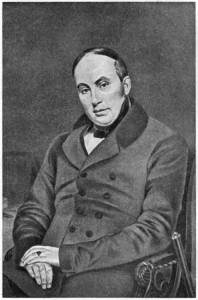
Zhukovsky’s gentle, Romantic nature appealed greatly to his first Imperial pupil, the Tsarina, later Tsaritsa, Maria, Alexander’s mother. Indeed, the entire Imperial family grew so fond of the court tutor and unofficial poet, that he was regarded as the natural choice to educate the heir.
While Tsar Nicholas shared his wife’s enthusiasm for Zhukovsky’s sentimental nature, and clearly supported his role as tutor to the Tsareivich, he was more concerned with developing Alexander’s “manly,” militaristic side. His stern demands of Zhukovsky included that the boy engage in rigorous physical activity, to never, ever question his father the Tsar in any way or dispute or otherwise debate any decisions or policies of the Tsar, and to, in general, inculcate a profound, unquestioning respect for, and fear of, his father. These things Zhukovsky did, but in each instance he added a full measure of Romantic poetry. The Tsarevich even read poetry on the long walks taken with his tutor. It was with Zhukovsky that Alexander could truly be himself, and the boy’s innate sentimentality blossomed as a result. As long as he presented the image his father wanted to see, all was well.
The underlying problem, of which the Tsar was apparently unaware, is that while, yes, his son showed an interest and aptitude for military pursuits, when he was with Zhukovsky, he was learning about the suffering of the Russian peasants, via poetry. He was also known to frequently cry when he was with his tutor, and that his tutor cried with him. Alexander had a reputation of tearing up long before Zhukovsky took the child under his wing, but long hours spent together, discussing things Romantic (the natural world, the common people, romantic love, among others) did not cure the boy of a habit his father found increasingly embarrassing. Even years later, when a teenaged Alexander fell deeply in romantic love with an early mistress, sought to marry her when she fell pregnant, and was devastated when his autocratic father married the young woman off to a military officer, banishing her from his son’s sight forever, Alexander rushed to his favorite tutor and collapsed into Zhukovsky’s arms, where they cried together.
As Alexander grew into young adulthood, Zhukovsky and his Romanticism continued to inform and advise. On several occasions the poet boldly challenged Tsar Nicholas’ persistent desire to “toughen” his son, interpreting his sensitive side as “feminine.” When Alexander reached majority, it was Zhukovsky who insisted that the Tsareivich go on a tour of the country he would one day rule. The tour would include elements of what was then standard fare for traveling young aristocrats on a Grand Tour, but Alexander and his teacher would also visit the countryside and encounter poor villages where the people were so desperate, so hopeless, that children were neglected, and wives were beaten brutally by husbands who long ago turned to alcohol in order to dull the painful fact that they would in no way ever be able to provide for their families. Though no known record of his reaction exists, it stands to reason that Alexander’s natural – and nurtured – sentimentality provoked tears, pity, and perhaps a determination to someday help his people. It was not a new idea. Both his father and uncle, Alexander I, seriously considered emancipating Russia’s serf population. Those two tsars, confronted with outrage from the nobility, who could not maintain their luxurious lifestyle if their serfs were freed, retreated into the comfort of the autocratic status quo.
Finally, the Romantic Zhukovsky influenced his pupil in one other important area of his life, that of the personal. Zhukovsky was a bachelor upon first arriving at the Imperial court. Typical to his Romantic nature, he had loved early and deeply, and had lost. He did not imagine that he would ever love again. Yet, when he was fifty-three, he was surprised to fall in love again, this time with a seventeen-year-old girl. The love was reciprocated. The couple married, had children, and lived happily together for years.
Much later, when Alexander was middle-aged and in a marriage based on respect rather than passion, he, too, fell in love with a seventeen-year-old. He established her as his official mistress and eventually installed her and the children they had together in the palace he shared with his queen and legitimate children. When the long-suffering Tsaritsa finally died, Alexander married his young mistress. It was she who rushed to meet him as he was brought, bloodied and near death, to the palace. She was the perfect picture of sublime Romanticism as she came screaming down the staircase, clinging and calling in vain to her “Sasha,” her only garment, a white negligee, soaked with his blood.

ROMANTICISM AND THE INTELLIGENTSIA
The Bolsheviks designated the Russian intelligentsia class with the French term bourgeoisie. It was not meant as a compliment. Rather, it was a way to point to the middle-classed intelligentsia that had grown up under the last four Tsars as something less than truly Russian, since that social class had collectively been heavily influenced by Western culture since the reign of Peter I (the Great) . And it was true, the educated classes had; by necessity, turned to the West for social and cultural inspiration. Russia, after all, was held from development for centuries, due to reasons varying from the climate to the extreme conservatism of autocracy, and even serfdom.
As early as the 1790s; however, some members of the Russian intelligentsia class had obtained works of literature from the West. Such materials were often acquired during a young nobleman’s or rich merchant’s son’s Grand Tour of Western Europe. This was the case with Nikolai Mikhailovich Karamzin, who was educated by tutors, attended University of Moscow, and much influenced by the Enlightenment and Free Masonry. The latter was a particularly strong movement in Russia during the nineteenth century, and largely due to its emphasis on the emotional bonds of friendship. Karamzin also spent time touring Europe, where he was exposed to the first generation of British Romantics.
Upon his return to Russia, Karamzin established himself as an author, publisher, and literary critic. His spread of Romantic ideas in Russia was profound, as he quickly became known as the first serious, Russian author of short stories, all written in the Romantic style and in the melancholy manner that had wide appeal in Russia. Like Zhukovsky during the reign of Nicholas I, Karamzin’s ideas and stories reached the ear of Nicholas’ brother, Tsar Alexander, and Karamzin was invited to work at the Imperial court, under the title of Court Historiographer . Karamzin’s Sentimental tales of cruel masters, broken-hearted, abused serfs, and abandoned children were known and read by the Tsar, his family, into the reign of his brother, Nicholas I and his family, and thus, trickled down to the nobility, and the western-culture-obsessed intelligentsia. Literate Russians continued to read and take inspiration from the Romantic western authors and artists, but as the century progressed, they turned increasingly more to their own, Russian-tinged hybrids. It was Zhukovsky who discovered and nurtured Alexander Pushkin, known for centuries now as the “Russian Shakespeare.” Much of Pushkin’s work bears the imprint of his mentor’s influence, with sentimental, touching stories of love, longing, and loss.
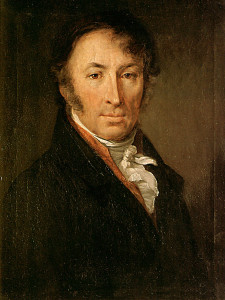
Love and loss themes were important during this period of Russian culture, but the voice of dissent was also heard; and, at times, landed authors in trouble with the Tsar and his government. One can only speculate what young Alexander II thought of his uncle’s and later his father’s banning and censorship of satirical (i.e., covertly critical) works such as “The Nose,” and “The Overcoat,” by Nikolai Gogol, who critiqued a corrupt bureaucracy and the cruel aspects of autocracy. Or if he pondered how even Pushkin himself, who was sent into exile by Alexander I, on suspicion of having influenced the Decembrist’s rebellion of 1825, was restrained in expressing the tenets of Romanticism. What is known is that those tenets were the same tenets that would indelibly influence Alexander’s mind and heart , and thus, he may well have not favored the hard line his father and uncle took against Russian Romantic authors.
Despite the censorship and the authors sent into exile (usually only briefly), this new type of Russian literature, sentimental, satirical – sometimes both at once – thrived. Gogol, Pushkin, Turgenev, Lermontov, and Dostoyevsky, were widely read, taught, and discussed, across the vast nation. Members of the nobility also wrote and published; most notably and significantly, Count Leo Tolstoy. Chief among the readers of such literature were the Tsar and his family. The dualism of Romanticism and autocracy Alexander experienced during his upbringing and early adulthood were to both inform and mark his reign; both from the practice of his own Romantic world view, and from similar values shared with his contemporaries in the intelligentsia class.
Another important informant to nineteenth-century Russian culture was the changes in Russian art. Like other aspects of Russian culture, and despite the efforts of Peter I and Catherine II, the Renaissance and Baroque periods mostly bypassed Russia, which remained stolidly loyal to the traditional Byzantine forms. Russian art had for centuries clung to the stylized, rigid images produced by Russian Orthodox icon makers. Once again, Western Romanticism played a role in the modernization of Russian art. Indeed, Western influences, particularly that of French Impressionism, paved the way for another artistic hybrid, Russian Impressionism. The themes of the new art were image-based reflections of the new Russian literature. The life and plight of the common man was a popular theme. This was a particularly poignant theme in a land where most of the population was held in bondage. In other words, such circumstances push the Romantic into the realm of the Realist, something that was not lost on the anxious Russian aristocracy. Works such as Barge Haulers on the Volga, by Ilya Repin, depict the hopelessness of peasant life, while simultaneously expressing hope for a better future in the face of the young man portrayed at the front of the barge. He looks beyond his situation, his brow furrowed with the determination of the young to improve one’s existence. His weary, elder co-workers represent the pain of serfdom; or, the past. The young man’s face and body posture suggest and point to the future. Yet, the present remains wrought with difficulty. The present is unacceptable. Repin suggests that not much has changed, but the future still holds promise. Barge Haulers on the Volga was painted in 1870-71, the decade of turmoil that led to Alexander II’s assassination.
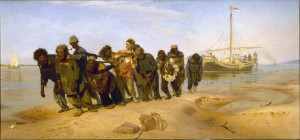
Russian Romantic painters did not hesitate to portray a painful sort of sentimentality. The melancholy that imbued the new Russian literature also found a place in the new art. The lives of Russian peasant children were difficult. Worn out from work at an early age, such children lived lives of desperation that were often brief as well. Artist Vasily Perov captured the suffering and embedded symbols in his painting Troika, Apprentices Fetch Water.
The word troika is equestrian in nature, describing a type of carriage that was pulled by three horses. It was a popular mode of transport in Russia for centuries. The children serving as livestock symbolizes the maltreatment of peasant children, but there is further symbolism embedded here as well. Even a traditional troika – one employing horses – is considered somewhat cruel to the three horses, as they are animals not designed to be harnessed in groups of three, a practice which results in confusion and pain for the horses. Therefore, if a harnessing arrangement is hazardous to animals, what does it say about a society that would harness children in a similar fashion? Finally, the troika children symbolize the Holy Trinity. Children, too, are sacred, claims Perov, and should not be treated as beasts of burden.

What is important about this sentimental imagery is that art is often what informs a public most. This was particularly true in an age and in a country where illiteracy was still common . While most Russians of the nineteenth century did not have access to original artwork, copies were made and displayed in the provinces, and cheap prints were also available, thereby a large segment of the population – literate and otherwise – to images imbued with social critique.
The Imperial family was no exception to the influence of Russian Impressionism and sentimentality in art. Indeed, the court painter Lauritz Tuxen, portrays an emotionalism and sentimentality even in coronation paintings. Perhaps one of the most memorable of these was made for the coronation of Alexander II, and undoubtedly required the Tsar’s approval before publication in the elaborate coronation albums produced (and at the writing of this essay, on display at the Hillwood Museum, Washington, D.C.) for the occasion. The Tuxen work that appears below demonstrates the importance of love, children, and sentimentality to the Imperial Family. Tuxen portrays the Imperial couple in an embrace, as their beautiful, and rather animated young sons look on adoringly.
The dynamism and sentimentality expressed in the painting is unusual for its type. Not even Alexander II’s grandson, Nicholas II and his storied romance with Tsaritsa Alexandra were portrayed in a manner so emotional. But Alexander II was crowned at the height of Russian Romanticism, and this painting is evidence, in the form of imagery, that sentimentality and “the overflow of emotions” mattered to the new tsar. And if the Tsar is portrayed as a loving husband and father, would not the “Little Father” (as peasants called their tsar for centuries) care also for all of his “children” in a similar manner?
The new art and literature that inspired two generations of Russians is today considered the Golden Age of Russian literature and art. It was the culture into which Alexander II was born and came to maturity. It was the culture that was embraced by his mother, his tutors, and the Imperial court in general. It was also the culture that led to his assassination. The tenets of Romanticism had nourished Russian society – from the palaces to the villages – and would soon express themselves in decree, in legislation, and in terrorism. While Alexander II harbored secret plans and dreams to rebel against what he perceived as his father’s brutal autocracy, and sought to free his people from serfdom, other members of his generation became known as nihilists. Some of the latter turned to revolution and terrorism in an effort to free themselves and all of Russian society.
FULFILLING THE TENETS
History credits Russian author Ivan Turgenev with coining the modern usage of the term “nihilism.” Translated literally from the Latin as, “nothing,” it was applied by literary critics such as N.I. Nadezhdin to Pushkin and other mid-century authors. In his novel, Fathers and Sons (1862), Turgenev expanded the definition to include “disheveled, untidy, unruly, ragged men who rebelled against tradition and social order.” As popularity and usage of the term spread across Russia, it became imbued with a more Romantic meaning: Nihilism as a type of heir to the virtues of the French Revolution and a call to heed the wisdom of the common people. This latter definition is Romanticism at its essence. Both conservatives and liberal minds of the day used the updated definition to label the extreme fringe groups that were made up largely of the younger generation, those who advocated protests, reform, and even violence to bring an end to serfdom and an end to autocracy.
While Turgenev, Gogol, and Russian artists of the silver age were inspiring reform and even violence in the hearts of some, Tsareivich Alexander was struggling with his Romantic side and proving to his autocratic father that he possessed the internal steel to one day take on the role of Tsar. In fact – and not untypical of Imperial Romanovs – Nicholas I was reticent in preparing his son for the awesome role he would later fill. Frustrated, Alexander did what he could to learn and mentally plot the reforms he sought to enact once he was Tsar. Mental ruminations and time with Zhukovsky (who continued to mentor Alexander) were his only outlets in the repressive, censorious climate dictated by his father, the Tsar. These were years when he also fulfilled his role as heir by marrying a suitable princess and producing additional heirs.
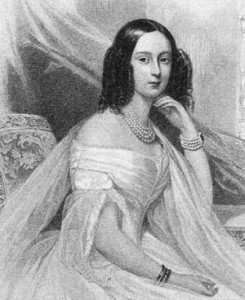
Alexander was less responsible in his role as husband. Again embracing the Romanticism taught to him in his youth, Alexander loved being in love, particularly the excitement brought by new love.
So, when he married Marie of Hesse, it was initially viewed as something of a love match. However, his eye soon strayed and he developed a reputation as a womanizer. The Tsaritsa was likely raised to expect as much from an Imperial spouse; yet, her heart was often broken over her husband’s affairs and dalliances. Her children took her suffering to heart and resented their father for the humiliation of their mother.

Alexander’s father, Nicholas I, was not known for keeping mistresses or conducting affairs, and was unlikely to have served as a role model for Alexander’s persistent pursuit of new women. Some writers argue that his father did not stray from the marital bed for twenty-five years; and only then, because his wife’s doctor had forbidden further pregnancies. More than likely, the core of Alexander’s interest lay in his Romantic education and the sentimental climate in which he grew up. Indeed, his pursuit of the new and novel in women was not a folly of youth. Instead, it informed his entire life. While he was certainly not the only crown prince and later; king, to indulge in such a lifestyle, Russian culture as a whole was disapproving of his conduct. This was because in Imperial Russia the Church and the Crown were intertwined, and the Tsar was expected to serve as moral compass for the entire nation. Indeed, the Russian people in some ways equated their Tsar with God, prompting the popular saying, “God is in his heaven and the Tsar is far away.”
When Alexander succeeded his father as Tsar in 1855 (at age thirty-seven), he was for a time focused on pushing forth the reforms he had planned in his youth. He began to lay the groundwork for what would result in the emancipation of Russia’s serfs, a group that made up more than ninety percent of the country’s entire population. Nihilists and other hardline reformists supported the idea, but neither they, nor the Tsar, nor the wealthy landowners – all of whom were nurtured with the ideals of Romanticism – realized the enormity of the matter, nor its consequences.
Initially, Alexander struggled to convince politicians and the nobility to support any sort of serf-related reform. Indeed, Russia’s slavery system was so complex and varied that even some serfs opposed major reform. In nineteenth-century Russia, it was not rare for a serf to become middle-class or even wealthy, even owning serfs of his or her own. It was also common to encounter an impoverished prince. Russia, unlike Great Britain, did not adhere to a primogeniture system; the result was that each generation of princely families bestowed titles and property on every child. Over time this resulted in arrogant (and angry) penniless princes and deprived duchesses.
To draw a finer point on the situation, Alexander was awakened from his Romantic dreams of liberty for all when he realized that by freeing the serfs, the landowners (and some serfs) would be angered and unwilling to provide land on which the freed serfs could begin a new life. Similarly, if he did not push for major reforms, the growing tide of angry nihilists and revolutionaries might win over enough minds and hearts to overtake autocracy, the establishment, and seize control of government and society. Alexander’s fear was not irrational. Russia has a history of revolution and insurrection that goes back centuries before Vladimir Ulyanov (Lenin) ever drew breath. It is not out of the realm of plausibility that Alexander recalled the quote of another would-be emancipator, the American statesman and president, Thomas Jefferson, who wrote in regard to slavery, “But as it is, we have the wolf by the ear, and we can neither hold him, nor safely let him go. Justice is in one scale, and self-preservation in the other.” Alexander’s dilemma was much the same. In the end, he chose the way of the Romantic, and the serfs on private estates were freed. The date was February 19, 1861 (old style). Alexander II became known from this point as the “Tsar Liberator.”
The immediate reaction was overall positive, but serious problems soon reared their collective heads from under the blanket of compromise that resulted in the emancipation. While the nihilist and reformist faction were pleased that freed serfs were granted full citizenship, they deplored the compromise that demanded the freed serfs pay landowners for the acreage allotted to them. The landowners were also unhappy, as they lost control of their work force and had to turn over land to the same with no evidence that the new citizens would ever be able to pay for it. Landowners also chafed at the notion that private property serfs were freed, while government owned serfs were not. The freed serfs themselves soon became unhappy, as it became clear that their former lords and masters allotted them the poorest quality land, unsuitable for agriculture. Some serfs were granted land that had no water, and were thus required to not only pay for what was essentially useless land, but also must pay their former masters for access to water on adjoining lands. These were serious requirements affecting so many people, few of whom possessed or were likely to later possess the means with which to pay.
By 1866, five years after the initial emancipation, the countryside was in chaos. The Tsar and his government agreed to free the government-held serfs, hoping to appease both the landowners and the hardline reformists, including the nihilists. Even at this early point it was probably too late to save the Tsar’s life. The Tsar’s hands had metaphorically slipped from the wolf’s ears and the loosed animal was preparing to strike. Alexander’s Romantic idealism was crashing around him, but this he did not notice. For by 1866, he had become a self-described hunted man. He had also fallen passionately in love. That love, and the fear for his own life, began to consume him. The Romantics called such experiences “sublime;” or, “touching death.”
INTO THE SUBLIME
The year 1866 also marked the first serious attempt on the life of Alexander II. His narrow escape may have indeed contained elements of the sublime, the touching of death. If such experiences prompt an individual to live for the moment and for one’s personal happiness, then that is what Alexander appears to have done. In 1865, while visiting the school she attended, he met Catherine Dolgorukova, daughter of a Russian prince. She was sixteen years old and the Tsar was forty-seven. Again, Alexander took inspiration from his Romantic tutor, Zhukovsky, who had met and married a teenager when he was in middle age. Within a year, despite the assassination attempt (or perhaps because of it) and the continuing political turmoil, Alexander had convinced the young woman to become his mistress. Initially quite reticent, Catherine soon took her role seriously, maintaining steadfast devotion to the Tsar, to the four children born to the couple, and with a keen eye to eventual marriage. According to accounts of the time and letters written between the two, the couple’s relationship was one of great passion and romance.
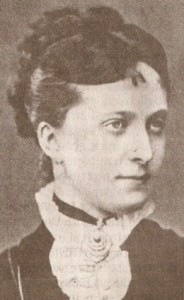
The Tsar was so enamored that he soon moved Catherine and their children into the same palace where the Imperial family, including Tsaritsa Marie, resided. Such an arrangement was practically the norm at certain points in Western history, such as existed at Louis XIV’s Versailles, but it was unheard of in Russia, where nobles and royals likely indulged in infidelity, but only if it was handled in the most discreet manner possible (i.e., never seen nor spoken of). Russians of every social stripe and standing were appalled at the middle-aged Tsar’s behavior. His own family, especially his legitimate children and his wife (who was by now ill with tuberculosis), were angry and despairing of the situation. Yet, Alexander continued to indulge in his favorite Romantic practice, the pursuit of personal happiness. He was not fully cognizant of the fact that his fellow Romantic travelers, the nihilists, were furious at the mishandling of serf emancipation, had already transformed into terrorists and were actively engaged in the pursuit of ending autocracy in Russia.
The Romantic tenet of the sublime also captivated the nihilists-turned-revolutionaries. Inspired by the plight of the Russian serfs and peasants, some of the nihilist generation of the 1860s-70s – most of them educated (often abroad) sons and daughters of minor Russian nobility, wealthy merchants, and the intelligentsia class – formed or joined the Narodnik (people of the land) party. Their goals included going to the peasants themselves to help educate, provide medical care, and also to encourage protests and uprisings.
While none of these young revolutionaries were raised in palaces, they shared an upbringing similar to that of the sheltered, assuming and naïve Tsar, as well as a similar exposure to Romanticism. None of them had even an inkling of what life was like for the average Russian peasant, yet they all purported to understand those same peasants. Foremost among the assumptions of the nihilist revolutionaries was the need to topple the autocratic Tsar and all he represented.
Just as Alexander was obsessed with Catherine, the young revolutionaries became obsessed with their cause. Vera Figner, a former university student who became leader and nearly sole survivor of what became known as Narodnaya Volya (The Will of the People), wrote that her cause had become her religion, the thing she lived for and was also willing to die for. She was not alone in her sentiment. Figner and others participated in agitation and propaganda activities among the peasantry and in towns and cities, assisted in the acquisition of materials for the making and the creation of bombs, and the planning of further attempts on the life of Alexander II. An attempt was made in April 1879, while the Tsar was walking in St. Petersburg. A former student, Alexander Soloviev, confronted the Tsar, then fired five shots as the Tsar fled. Once again the sublime intervened and the Tsar only touched death. All five shots missed the target.

Later that year, the Narodnaya Volya planned an attempt, anticipating not only the death of the Tsar, but also the start of a great social revolution. Members of the terrorist group were prepared and ready to strike, but they missed Alexander’s train. The Tsar knew of each attempt and many of the plots, and it was at this point that he uttered in stress and frustration, “Why do they want to kill me?” Weeks later, another attempt was made by Narodnaya Volya, who had placed a bomb beneath the floor of the Winter Palace dining room, where the tsar was expected to dine on the evening of February 5, 1880. Fate again intervened and the Tsar was late for dinner. The explosion killed eleven others and wounded thirty.
At this point, all of St. Petersburg, and particularly the Tsar and his family, was frightened and on edge. New proposals, handed down by the newly appointed head of the Supreme Executive Commission, gave the commission and law enforcement nearly unlimited powers to fight the terrorist and revolutionary groups attempting to assassinate the Tsar. Despite Alexander’s approval, the proposals were never enacted. The Tsar remained an accessible target.
It has been said by more than one observer of Russian history and culture that the Russian character possesses a wide streak of fatalism. Perhaps as time and attempts on his life moved by, Alexander had embraced that characteristic of his heritage and culture. No more did he press for extraordinary measures to be taken to preserve his safety. By now his wife had died and he and Catherine had married, much to the disapproval of his adult children and St. Petersburg society. It apparently mattered not to the Tsar, and his love life and outlook remained in pursuit of the Romantic. Furthermore, he persisted in the belief that he had fulfilled his youthful, also Romantic, goal of liberty and egalitarianism for the people he ruled. Finally, his sublime brushes with death may have inured him from the real and very present danger that was about to engulf him.
On March 1, 1881 (old style), the culmination of nearly one hundred years of Russian Romanticism met in St. Petersburg. There, hidden away on the sidelines, were the revolutionaries, whose religion was their cause, and their cause was of and for the common people, the people of the land. Narodnaya Volya, they who took inspiration from the Romantic ideals of the French Revolution, but, just like that earlier, great paradigm shift, descended into violence and terror. They waited, and then the Tsar and his entourage approached. A bomb was thrown. A Cossack fell dead, several others severely wounded. The Tsar stepped from his damaged carriage unharmed, and walked, unaccompanied, checking on the wounded and pausing for long moments. Observers later reported it was as though he was waiting for something. He was encouraged to return to his bullet-proof carriage, but did not do so. Then, a young voice called out, “It is too soon to thank God.” It was Ignaty Grinevitsky, another young member of Narodnaya Volya. As he spoke he threw something at the Tsar’s feet. There was an explosion. And blood. Within minutes he was returned to the palace to die in the bloodied arms of his sobbing wife. It may well be argued that Romantic ideals – at least in Russia — died in that same moment. Henceforth, Russian culture, literature, and art turned to realism and the abstract.
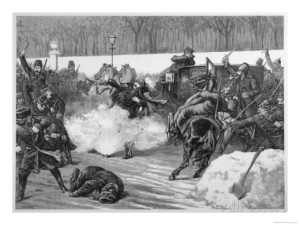
THE AFTERMATH
The assassination of Alexander II struck fear in the hearts and minds of people worldwide. His murder was viewed as the legacy of the terror that came from the French Revolution. Yet, in the years leading up to and the decades following that time period, society, literature, and the arts praised the French Revolution as one of the primary informants of the Romantic Age. Those who embraced the tenets of Romanticism, including Alexander II and the nihilists, either ignored or were unaware of the dark side it also possessed. They wanted the same things for their people, and for their country, but somehow they all missed the idea that with great reform usually come great and sometimes negative consequences.
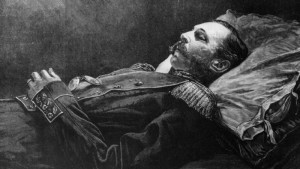
Among the first of those consequences was the continued and growing desperation of the peasantry. For decades following emancipation, little to no assistance was provided to aid the transition from slavery to true independence and a life without grinding poverty. Alexander’s successor, his son, Tsar Alexander III, spent his reign both focusing on a return to repressive autocracy and, like his father, dodging the bullets and bombs of terrorists. Romantic-themed literature was once again banned and reformists exiled. He hoped to stop social reform in its tracks, and return Russia to complete authoritarianism. Alexander III was not particularly by nature an autocratic man; indeed, he liked to identify himself with the peasantry. Yet, the results of his father’s reforms, and his personal life as well – all coming out of Romantic thought – had caused the Imperial family pain and loss on a level the new Tsar did not wish to repeat. His own successor and eldest son, Nicholas II, allowed a return to Romantic ideas and practices. He was the last Russian tsar.
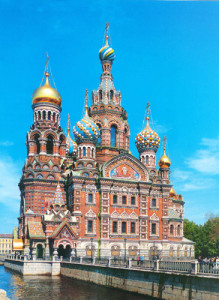
ANNOTATED BIBLIOGRAPHY
Berlin, Isaiah. Russian Thinkers. Kelly, Henry, and Aileen Kelly, editors. New York:
The Viking Press, 1978.
Serving as important background and preparation for writing the essay, this volume includes seven essays that discuss the major tenets of nineteenth-century Russian thought, including philosophers Alexander Herzen, Ivan Turgenev, Mikhail Bakunin, and Leo Tolstoy.
Beran, Michal Knox. Forge of Empires, 1861-1871: Three Revolutionary Statesmen and the
World they Made. New York: Free Press, 2007.
This book helps to provide context for the times in which Alexander II lived and died, and examines the lives and efforts of three powerful men living at the same time and engaged in social and cultural reforms on a large scale.
Broido, Vera. Apostles into terrorists: women and the revolutionary movement in the Russia of
Alexander II. New York: Viking, 1977.
Written by the daughter of a female Menshevik (the Bolshevik’s primary rival political party), Broido provides a close examination of the educated young female nihilists of the nineteenth century, who enjoined the revolutionary struggle to fight for women’s rights and a better life for Russia’s enormous peasant population. Significantly, Broido addresses the radical response to the fallout from Alexander II’s emancipation of the serfs, and how a buildup of frustration and anger towards the autocracy over a perceived mishandling of the freed serf’s lives led to a climate that would result in the assassination of the Tsar twenty years after the emancipation.
Day, Aidan. Romanticism. New York: Routledge, 2012.
A concise, yet thorough, explanation and exploration of the Romantic movement (approx.. 1775-1835).
Easley, Roxanne. The Emancipation of the Serfs in Russia: Peace arbitrators and the
Development of civil society. New York: Routledge, 2011.
Easley provides a fresh look at the profound effects and difficulties encountered by Russians of all economic backgrounds when Alexander II freed the Russian serfs (who constituted a high percentage of the general population). Easley’s focus is on the problems Russian society and the autocracy faced in the wake of the emancipation, and suggests that the myriad difficulties encountered were a factor in the ongoing nihilistic and revolutionary sub-culture of the nineteenth century.
Engel, Barbara Alpern, and Clifford N. Rosenthal, eds. Five Sisters: Women Against the Tsar.
New York: Routledge, 1987 (reprint).
Young Russian women from the intelligentsia class played significant roles in the radical nihilist and revolutionary movements during the nineteenth century. Indeed, some were directly involved in the preparation to assassinate Alexander II. While the proposed essay does not deal specifically with gender, this volume of compiled memoirs from revolutionary Russian women, including Vera Figner, who was one of the few members of “The People’s Will” involved in the assassination who was not executed for her crime, provides insider details of the years, months, and days leading up to the assassination, and helps to explain the core motives surrounding the terrorist organization’s intentions.
Engerman, Stanley, ed. Terms of Labor: Slavery, Serfdom, and Free Labor. Palo Alto: Stanford
University Press, 1999.
This volume provides a section written by comparative historian Peter Kolchin. His essay compares the post-slavery/serfdom periods in the United States and Russia, during the nineteenth century. He discusses the myriad of complications that arose as a result of “freeing” millions of people at once, leaving many of them displaced and mistreated. Kolchin’s contribution helps to point the way toward the rise of groups such as “The People’s Will,” and others.
Figes, Orlando. The Crimean War. New York: Metropolitan Books, 2011.
Figes’ comprehensive volume is used solely to complicate my understanding of the blow to Russian morale as a result of the Crimean War, and how the humiliating defeat served as just one more chord of discontent that led to more revolutionary activity in Russia during the mid to late nineteenth century.
Haywood, Ian. Bloody Romanticism: Spectacular Violence and the Politics of Representation,
1776-1832. New York: Palgrave, 2006.
Lampert, E. Sons against Fathers: Studies in Russian Radicalism and Revolution. Oxford:
Oxford, 1965.
Lampert’s monograph is considered a seminal work researched and published during the Cold War. While he did not have access to a number of Russian and Soviet sources, a good deal of nineteenth-century Russian primary and secondary sources were available during the 1960s, allowing the author to provide a close examination of the mid-nineteenth century generations of radicals and nihilists and the development and rise of the first Russian intelligentsia class. A number of the members of “The People’s Will” were members of this group, or the children of the same. Lampert helps to elucidate some of the reasons this particular group sought radical reform, some of which was put into place by Alexander II, and also led to his assassination.
Lynch, Michael. “The Emancipation of the Russian Serfs.” History Review December 2004,
28-32.
Lynch succinctly argues that the greatest problem for Russia’s nineteenth-century tsars and ideas of reform had to do with the fact that each autocratic leader sought the impossible: to achieve reform without damaging the interests of the privileged classes.
Massie, Suzanne. Land of the Firebird: The Beauty of Old Russia. Blue Hill, Maine: Heart Tree
Press, 1980.
Massie provides a colorful, descriptive tour de force of Russian culture in the Imperial age.
McCaffray, Susan P. “Confronting Serfdom in the Age of Revolution: Projects for Serf
Reform in the Time of Alexander I.” The Russian Review 64 (2005):1-21.
McCaffray’s article examines a period of importance to the understanding of the eventual emancipation of Russian serfs in 1861; namely, the reign of Alexander II’s uncle, Alexander I.
McCarthy Gallery website
http://www.mccartheygallery.net/index.php?option=com_content&view=category&layout=blog&id=1&Itemid=2
This webpage concerns the influence of French Impressionism on nineteenth-century Russian art.
Matlaw, Ralph E., ed. and trans. Ivan Turgenev, Fathers and Sons: The Author on the novel contemporary reactions and essays in criticism. New York: Norton, 1966.
Contemporary, authorial, and more modern criticism of Turgenev’s most stellar and influential work. Helpful in complicating an understanding of how nihilism morphs into terrorism in Russian culture.
Maxthausen, August, Freiherr von. The Russian Empire: its people, institutions, and resources. Robert Faire, trans. Volumes I and II. London: Cass Publishers, 1968.
These volumes will be used for reference purposes.
Melnikov, Mikhail. “Peasant Russia: Terra Incognita.” Russian Politics and Law 45
(2007): 53-75.
Melnikov argues that life as a Russian serf was in no way as horrible as historians have traditionally depicted. He provides rather flimsy evidence.
Mironov, Boris N. “The Myth of a Systemic Crisis in Russia After the Great Reforms of
The 1860s-1870s.” Russian Social Science Review 50 (2009): 36-48.
Mironov takes an unusual stand with regard to the post-emancipation period in Imperial Russia. Most historians argue that conditions for the freed serfs (more than eighty percent of the Russian population) had disintegrated to a state even worse than suffered under serfdom, and that it was this shocking situation that spurred the post-1860s revolutionary activity. Mironov, however, disagrees and claims that life actually became a good deal better for most freed serfs.
Monticello.org website
http://www.monticello.org/site/jefferson/quotations-slavery-and-emancipation
Mosse, Werner Eugen. Alexander II and the modernization of Russia. New York: MacMillan,
1992.
Mosse retells the story of the “Tsar Reformer,” but focuses on Alexander II’s role as a modernizer on a par with Peter I.
Polunov, Alexander. Russia in the nineteenth century: autocracy, reform, and social change,
1814-1914. Thomas C. Owen and Larissa G. Zakharova, editors. Marshall S. Shatz, trans.
Armonk, N.Y.: M.E. Sharpe, 2005.
Pulunov, writing in the post-Soviet era, provides a recent Russian historian’s perspective on what led to the abolishment of serfdom in Russia, and how that – along with the profound ripple effect of the French Revolution and the rise of the Russian intelligentsia class – led to the assassination of Alexander II and the eventual downfall of Russian autocracy. Pulunov’s work is especially helpful since he traces out the threads of autocracy in Russia to its most ancient times, and all in his introduction, helping other researchers to complicate their understanding of Russian culture and society.
Radzinsky, Edvard. Alexander II: The Last Great Tsar. Antonina Bouis, trans. New York: Free
Press, 2006.
Radzinsky provides a strong narrative and brings to life an oft-misunderstood figure from Imperial Russian history. His eminently readable biography serves as stage-setting for the life around which swirled so much reform and revolutionary activity.
Rindlisbacher, Stephan. “Radicalism as Political Religion? The Case of Vera Figner.”
Totalitarian Movements and Political Religions 11 (2010): 67-87.
Rindlisbacher argues that members of “The People’s Will” attempted to advance their view of “the people” as sacred, yet in a secular context, while fighting against the Orthodox Church and its twin, the Russian tsarist autocracy. He specifically addresses the case of Vera Figner, discussing her origins, the influences of her nihilist parents, her university education, and her time spent “going to the people,” as well as the French Revolution, as the primary sources for her (and others) determination to put an end to autocracy in Russia.
Semenko, Irina M. Vasily Zhukovsky. Boston: Thwane Publishers, 1976.
This lovely, concise biography of one of the seminal Russian Romantic theorists and authors sheds light on an author and tutor’s life that is not always evident in other texts. Helpful in understanding the early Russian Romantic movement.
Smith, Robert E. F. The Endsurfment of the Russian Peasantry. Cambridge: University of
Cambridge Press, 1968.
This text provides a thorough history of serfdom in Imperial Russia, and serves as background information to help in the understanding of how the tragic failures of serfdom led to repeated, intense revolutionary activity in Russia during the seventeenth through the nineteenth centuries.
Stites, Richard. Serfdom, Society, and the Arts in Imperial Russia: The Pleasure and the Power.
New Haven: Yale University Press, 2005.
A wonderful, insightful book that deals with art, particularly that produced by serfs, in Imperial Russia.
Tarasov, Oleg. Framing Russian Art: From Early Icons to Malevich. London: Reaktion Books,
2012.
A comprehensive, and thankfully, recent, volume concerning an overview of Russian art history.
Tian-Shanskaia, Olga Semyonova. Village Life in Late Tsarist Russia. Bloomington, Ind.:
University of Indiana Press, 1993.
A highly detailed description of the difficult lives of the Russian peasantry during the late nineteenth century. This volume is a very good example of the efforts of a number of young, educated Russians who literally went “to the people,” living among the freed serfs in an effort to help them improve their lives and to encourage reform on local, regional, and national stages.
Tosi, Alessandra. Studies in Slavic Literature and Poetics, Volume 44: Waiting for Pushkin:
Fiction in the Reign of Alexander I, 1801-1825. Amsterdam, NLD: Editions Rodopi,
2006.
A brief, but thorough, examination of the origins of Russian Sentimentalism/Romanticism. Particular attention paid to the influence of British literature on the nascent nineteenth-century Russian literature.
Ulam, Adam B. In the Name of the People. New York: Viking, 1977.
Another seminal text, Ulam’s book remains a tour de force examination of the mid-century nihilist generation, the political thinkers, and literary greats who powerfully informed the young student nihilists of the 1840s and 50s, who then influenced the generation that would form The People’s Will, who would assassinate Alexander II.
Volin, Lazar. A Century of Russian agriculture: from Alexander II to Khrushev. Cambridge:
Harvard University Press, 1970.
This project is not directly concerned with Russian agriculture. However, agriculture is often the crux of various Russian difficulties throughout history. Certainly the Russian serfs were tied to and utterly informed by land that was not their own, and mismanagement on the national and local level often resulted in agricultural disasters and difficulties such as crop failure, poor transportation infrastructure, and the resulting famine. Post-emancipation the average Russian fared no better and often times worse. Volin provides an exhaustive examination of Russian agriculture during Alexander II’s reign, and helps to connect agricultural concerns to economic and political issues during the same period.
Leave a comment